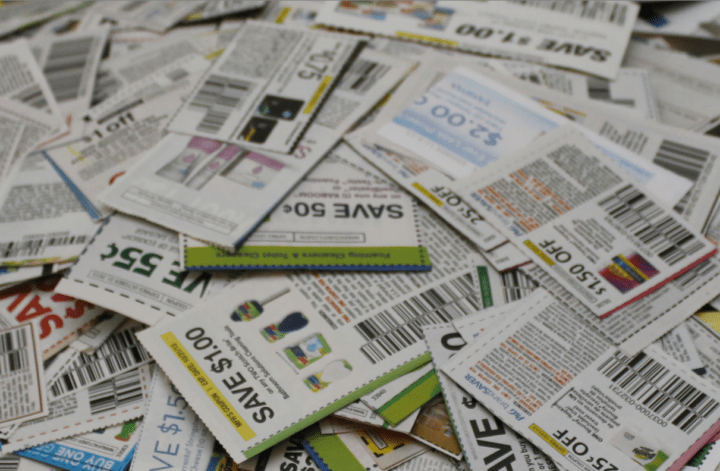
Maybe your coupon expired a couple of days ago, but you decided to use it just to see if it would go through without your cashier noticing. Maybe your coupon wasn’t valid on the exact product you purchased, but you figured it was close enough, so there’s no harm in trying.
Or maybe you’re an unrepentant fraudster who knowingly and regularly misuses coupons, because you figure you need those few extra dollars more than some multibillion-dollar company does.
No matter the motivation, a surprising new survey has found that roughly half of all shoppers admit to knowingly misusing coupons.
Immar Intelligence surveyed 1,000 people and asked them if they ever bend the coupon rules just a little. 52% of respondents said they have tried to use an expired coupon at some point over the past three months, and 48% said they have tried to use a coupon for a product to which it did not apply – otherwise known as glittering, glitching or balancing.
But shoppers misusing coupons are only part of the problem. Because more than half of cashiers let them do it. If a coupon they tried to use did not scan at the checkout, 56% of respondents said their cashiers simply overrode the system and gave them the discount anyway.
Inmar didn’t ask shoppers whether they had ever engaged in more egregious forms of coupon fraud, like modifying or photocopying coupons, buying likely counterfeits, or firing up a printing press and making their own. Presumably only a small subset of couponers engage in that type of activity. But the fact that so many couponers who likely consider themselves upright and honest would admit to trying to sneak one past their cashier from time to time, is still cause for concern among retailers and manufacturers as they try to combat all types of coupon fraud.
“Coupon fraud and counterfeiting are issues within retail,” Inmar Intelligence EVP & President, Fintech John Helmle said in a statement. By considering the survey results, “the retail industry can better calculate the true cost of coupon counterfeiting and determine ways to eradicate it completely.”
In a second survey of manufacturers, 90% told Inmar that they are concerned about coupon fraud, and 59% said they spend at least 20 hours per week investigating, processing and accounting for counterfeit coupons. Altogether, Inmar estimates that misused and counterfeit coupons cost the retail industry more than $100 million a year.
Still, while the survey results are troubling, some of them might not be quite as nefarious as they sound. One question asked shoppers whether they had recently tried to “use multiple discounts/offers/coupons when buying a single item?” 63% said yes. Troubling? Perhaps, because using two manufacturer’s coupons on a single item is not allowed. But combining a manufacturer’s coupon and a store coupon is permitted at most stores, as is combining a coupon and certain rebate offers, or using a coupon on an item that’s on sale. Many of those whose answered yes to stacking offers, then, might not be “admitting” to doing anything wrong at all.
Similarly, some of the 52% who said they have tried to use an expired coupon might shop at a grocery chain like Cub Foods, where “trying to use an expired coupon” is perfectly okay – Cub will accept coupons a month past their expiration date. And overseas military commissaries offer their shoppers a grace period of up to six months past a coupon’s expiration date. The question also didn’t differentiate between manufacturer and store coupons – using an expired manufacturer’s coupon is a no-no under most circumstances, but using an expired store coupon at a retailer like Bed Bath & Beyond is no big deal – usually, they’ll happily accept it.
Nevertheless, the survey results do call attention to an enduring problem. And they segue nicely into a pitch for Inmar’s new counterfeit coupon-checking tool, CNFRM, which allows retailers to instantly identify valid coupons – and catch invalid coupons – as they’re scanned at the checkout. Using a counterfeit coupon and using a legitimate coupon that happened to expire a few days ago are two very different things, of course. But Inmar says widespread adoption of its tool will help to eliminate all types of coupon fraud by 2024.
“We are committed to our pledge to end counterfeiting of coupons and have developed the tools to do so within three years,” Helmle said. “We look forward to the day when the retail industry is not losing millions of dollars to counterfeit activity and can continue to realize the awesome promotional marketing benefits of coupon price promotion.”
So it’s all something to consider the next time you try to see if you can get away with misusing a coupon. Either a tool like CNFRM will help ensure that you can’t – or survey results like these will ensure that brands reconsider whether they want to offer coupons at all anymore.
Image source: cpyles











But shoppers misusing coupons are only part of the problem. Because more than half of cashiers let them do it. If a coupon they tried to use did not scan at the checkout, 56% of respondents said their cashiers simply overrode the system and gave them the discount anyway.
Of course, that would only be fraudulent IF the coupon didn’t match the item being purchased. Many times, you can have a coupon that says (for instance) save $1 on ANY Brand XYZ item that the register won’t accept, so in that instance it is perfectly legitimate to use it on the item being bought, just an error in the coding so of course in that situation it would make sense for the cashier to accept it anyway (since it is a valid use)!
Neither the customer or the store can fix that error.
Also things like a coupon that the scanner won’t read as the printer (this was from a newspaper, not a computer printed one) didn’t have enough ink and it is too faint.